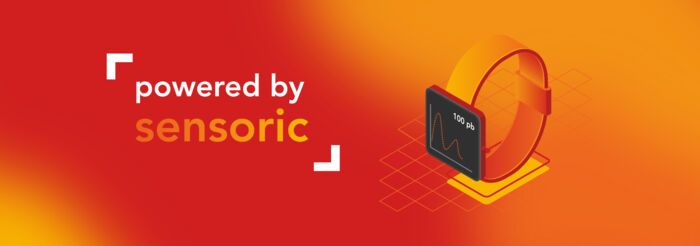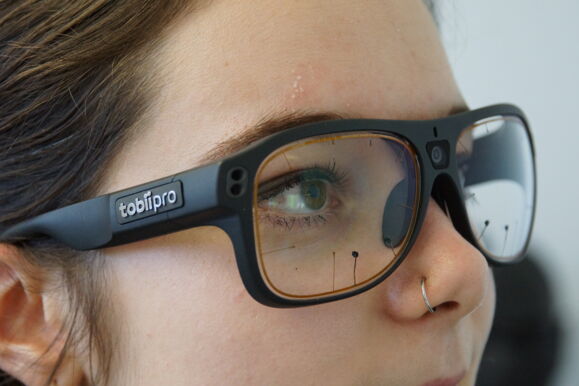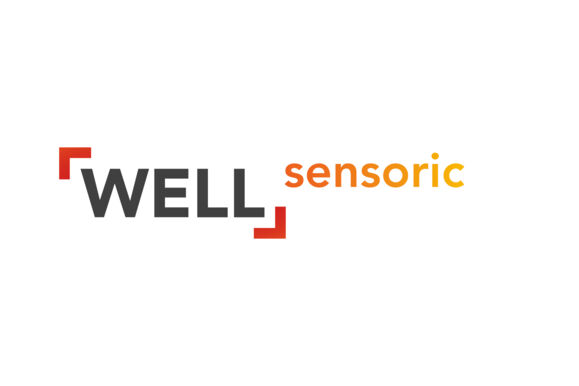Background
The design of future-oriented learning spaces is subject to various requirements (Koeritz et al., 2022):
- The orientation for active learning settings,
- Self-organization opportunities and autonomy for learners,
- diversity of learning spaces as well as
- Spaces for hybrid teaching and learning settings.
To this end, processes are currently being initiated at universities that both drive developments within the framework of participatory, interdisciplinary planning processes with organization-wide concepts and create experimental spaces as a basis for the active further development of learning spaces.
Our motivation
We, the team of the Weingarten Learning Lab (WELLsensoric) know from our own experience that learning is fascinating and triggers emotions. We are interested in these emotions during learning and want to explore them under different aspects. That is why we have powered our research lab on learning through SENSORIC. With modern psychophysiological measuring devices we approach the experience through learning and try to open this black box.
What is the WELLsensoric exactly?
Our experimental and research lab WELLsensoric is driven by the Makerspace tradition ("powered by") and offers novel sensor technology, such as digital measurement systems to capture psycho-physiological processes.
Data collection with these novel measurement systems is understood as part of digital literacy (see e.g. DiKoLAN, Becker et al., 2020). In doing so, it opens up novel perspectives in educational research and makes it possible to investigate the modes of action of new technologies on subjective sensations.
The WELLsensoric thus represents the extension of the educational Makerspace Colilab at the PH Weingarten.


Our team
Who we are
We are an interdisciplinary team consisting of experts from the fields of psychology, computer science, biology, chemistry, and sports science. Using various measurement systems (eye tracking, skin conductance, pulse...) we approach to answer questions about the mutual interaction of emotions and learning. In doing so, we also incorporate novel learning technologies such as VR or AR.
We are interested in research questions such as:
- How does teacher humor affect learning performance?
- What is the influence of emotionally positive or negative learning materials?
- What aspects of learning materials trigger emotions?
- Are online and face-to-face learning formats experienced differently emotionally?
- What effect do modern digital teaching-learning environments (e.g., based on VR and AR) have on learners?
- Can a robot teach as well as a human?
Are you interested in a cooperation? contact to us!
Dr. Monique Landberg
Educational Psychology
RESEARCH AND WORK FOCUS
- Identity development in adolescence and young adulthood
- Vocational development and career choice processes
- Discontinuous career and educational trajectories
- Lifelong learning
- Mental training
Contact
monique.landberg(at)ph-weingarten.de
Projects: Visualization as a means to reduce objective and subjective stress of students during exams - in cooperation with Dr. Kristina Götz

Junior-Professorin Sarah Lukas
Cognitive and Educational Psychology
RESEARCH AND WORK FOCUS
Sarah Lukas is an assistant professor of psychology. Her research interests lie in the area between cognitive and educational psychology. She predominantly pursues experimental psychological research approaches. Thematically, she is interested in learning processes and teacher-learner interactions when digital media, artificial intelligences, robots, and other modern technologies are involved. In particular, she is interested in the question of which interaction processes play a special role in learning and which technological design can be especially helpful here, and at which points, however, humans (perhaps nevertheless) remain irreplaceable. The experience in different learning environments is an important aspect.
CONTACT
lukas@ph-weingarten.de

Projects
Visualization as a means to reduce objective and subjective stress of students during exams
Project description
Studies show that people learn more sustainably when they are free from anxiety (Porges, 2017). A quarter of students are afraid of exams (Eissler et al., 2020). Due to the COVID-19 pandemic, among other things, feelings of anxiety among schoolchildren have increased (Ravens-Sieberer et al., 2021).
Research shows that test anxiety has a negative impact on performance and learning (Hagnauer, 2011). It is also known that being immersed in an activity, so-called flow experience, promotes learning (Hagnauer, 2011; Csikszentmihalyi & Schiefele, 1993). Hence, a positive emotional state during learning is beneficial. Reduced student anxiety is associated with improved achievement (Bradley et al., 2010). From this it can be deduced that profound knowledge and understanding is not possible for all people if learning and knowledge reproduction are associated with fear.
What can be done about it? Hypnotic techniques can signal security (Böhmer & Schmidt, 2021) and promote positive emotional states (Schmidt, 2022). Visualizations reduce pain (Nørgaard et al., 2015), help with learning (Fruth & Fruth, 2016) and are used in sports (Meyer & Hermann, 2015) and at school (Knörzer et al., 2011).
Both, the experience of flow and anxiety can be related to heart rate variability (Tozman et al., 2015). Skin conductance continues to be assessed in the context of math-related anxiety (Strohmeier et al., 2017). Self-hypnosis effects immune function such as cellular activity and cortisol level (Gruzelier et al., 2001). Longitudinal effects are of special interest due to the question of sustainable interventions. A meta-analysis found that hypnosis seemed effective in treating anxiety also at follow-up measurements (Valentine et al., 2019).
It is important for students to have effective strategies in place to facilitate learning and reduce anxiety regarding learning and exams for themselves during their studies and later on when being role models in various work settings, for example in schools. The exercise to be tested should also be able to be carried out shortly before an exam, hence, not taking too much time and at the same time being very effective. This can reduce inequalities and have a positive effect on the well-being of students in critical situations.
The research projects aims at answering different research questions such as the effectiveness of visualization exercises to reduce exam stress using the e4 wearables from empatica and blood pressure monitors. First results will be uploaded as soon as possible.
in cooperation with
Dr. Kristina Götz

The right tool for knowledge acquisition
Our extensive selection of sensing tools and equipment offers precise detection and measurement of a wide range of physical and chemical parameters.
From high-resolution spectrometers and chromatographic systems to highly sensitive biosensors and electrochemical analyzers, the latest equipment for research needs is available at WELLsensoric. The sophisticated sensors allow the measurement of temperature, pressure, pH, concentrations of various substances and much more to gain a deep understanding of samples and experiments.
Our advanced heart rate variability equipment can analyze biochemical and physiological responses in real time and investigate relationships between emotional states, stress responses, and performance. Advanced skin conductance devices allow assessment of stress and anxiety responses, while blood pressure monitors provide accurate measurements for cardiovascular studies.
Our goal is to obtain accurate and reliable data to gain new insights, test hypotheses, and make scientific breakthroughs.
Eye Tracker
MODEL
Tobii Glasses 3 (availability: 3 pieces)
RESEARCH PURPOSE/APPLICATION
The wearable eye tracker glasses can be used to conduct eye movement research in an everyday environment.
THE EQUIPMENT WILL BE USED IN THIS PROJECT(S).

Biofeedback device
MODEL
Neuromaster - Insight Instruments
RESEARCH PURPOSE/APPLICATION
This biofeedback system can record body functions such as skin conductance, heart rate, body temperature, respiratory rate, muscle and brain activity.
THE EQUIPMENT WILL BE USED IN THIS PROJECT(S)
Blood pressure monitor
MODEL
Beurer Upper Arm Blood Pressure Monitor BM 27
RESEARCH PURPOSE/APPLICATION
...
THE EQUIPMENT WILL BE USED IN THIS PROJECT(S)
Are you interested or do you have questions about the equipment?
Our experienced team is always available to advise you. Enter a world of advanced sensor technology and discover the many possibilities our equipment offers you.
